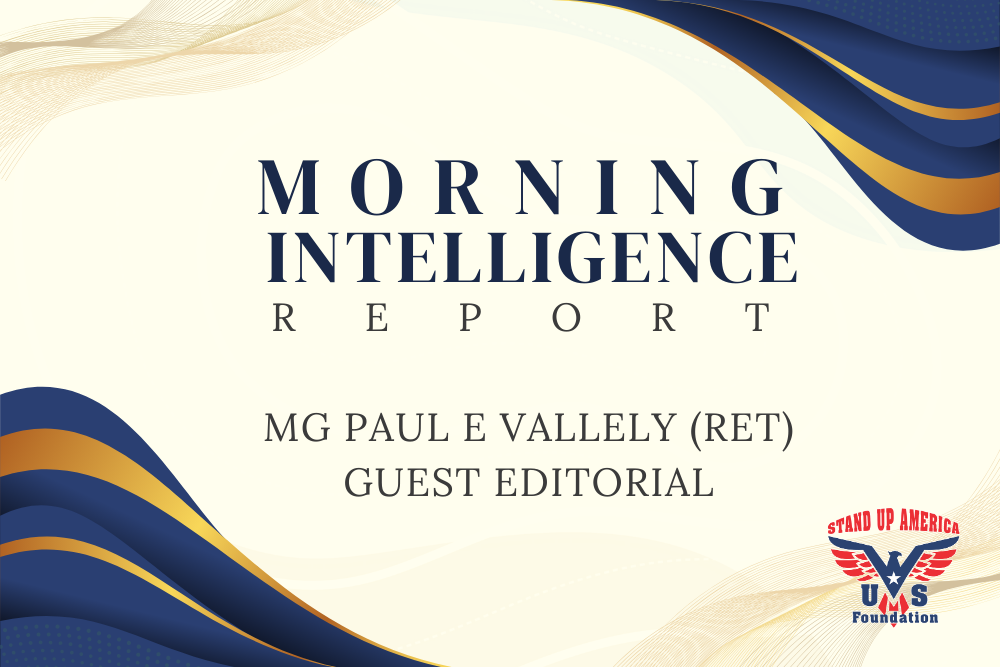By: Sohrab ChamanAra and MG Paul Vallely, US Army (Ret)
July 20, 2025
President Trump has far too many crises piled on his plate, distracting him from his central mission to “Make America Great Again.” Ukraine, the Middle East, North Korea, Taiwan, tariffs—not to mention domestic troubles and natural disasters—are already heavy burdens. Now, to add to the noise, the Wall Street Journal has thrown in a baseless, sensational story, and the controlled media treats it as though no other news exists.
It’s exhausting to watch. If I were President Trump’s speechwriter, I would tell the media: “I don’t know what the purpose of this fake news is. If the aim is to tie me to others’ wrongdoings—digging for some one-in-a-million chance to throw dirt on me—then I remind you of Scripture: Let those who have not sinned cast the first stone.” But the real issues cannot be ignored!
On the cover of my book Perplexity of Iran, the imagery reflects what I deeply believe: most of the world’s crises connect back to the puzzle of Iran.
On the back cover, I quote former Prime Minister Tony Blair. In 2015, after five years as the Quartet’s envoy to solve the Middle East conflict, Blair finally admitted: “Until the present regime in Iran is gone, there will be no solution to the Middle East conflicts.”
The world already owes President Trump thanks. His quick, decisive action halted the 12-day war between Israel and Iran—a conflict that could have exploded into something far worse. But if we sit still now, doing nothing, one mistake by either side could spark a new war and set back our mission indefinitely.
We have not been idle. Recently, we reached out to Mir-Hossein Mousavi, Iran’s former Prime Minister during the eight-year war, who has been under house arrest since 2005, when Ahmadinejad stole his votes. For decades, his slogan has been: “Returning to the golden age of Imam Khomeini.”
We told him plainly: The only “golden age” of Khomeini was when he was in Paris in late 1978, till April 1979 referendum, promising democracy, freedom, and a just government. Those speeches, documented in the newspapers of that time, deceived the people. But by late 1979, when the constitution was written, everything changed—and those promises were betrayed.
Just days later, Mousavi released a historic manifesto, co-signed by 800 well-known activists inside Iran, including 180 university professors, demanding a Constitutional Assembly (Majles Mo’assesan) to draft a new constitution.
Soon after, another manifesto followed, this time from 17 prominent figures, including Nobel Peace Prize winner Narges Mohammadi and human rights lawyer Nasrin Sotoudeh, echoing the same demand. These developments took us by surprise, but they confirmed what we have long been working toward.
For years, we have been advocating for constitutional change in Iran. Last year, we published The Road Map, a step-by-step plan showing how it can happen: if the U.S. Senate publicly challenges Iran’s constitution—exposing its eight clauses of terrorism and hostility toward America—and if the U.S. imposes smart sanctions targeting the regime’s corrupt elites and sleeper terrorist cells, a “Change of Constitution Revolution” can ignite from within Iran.
The 12-day war may have been a setback, but these two manifestos—now widely discussed inside Iran—show the moment is ripe. The people of Iran themselves are calling for what we have been advocating.
General, I ask you to carry this message again to the Trump administration. Urge them to take The Road Map Plan seriously and to listen to the voices rising from inside Iran—not the noisy, self-promoting opposition figures roaming the West.
The path is clear. We must not allow distractions or false narratives to derail it.
Sohrab ChamanAra: www.CyrusForce.org; www.CHAMCO.net


